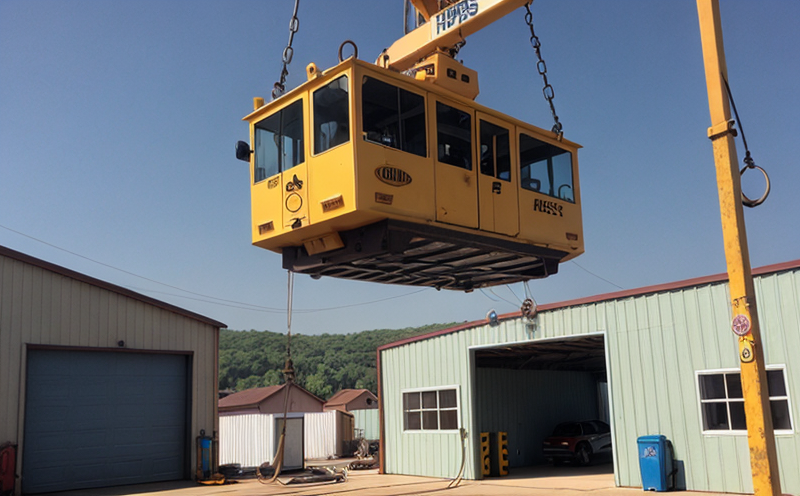Hoist inspection
Hoists are critical components in lifting equipment and cranes, responsible for safely moving heavy loads. Proper inspection of hoists is essential to ensure compliance with international standards and the safety of personnel and property involved in their operation.
The primary purpose of a hoist inspection is to verify that all parts of the hoist function correctly under specified conditions. This includes checking the mechanical integrity, electrical components, and control systems. Compliance with relevant standards such as ISO 4302:1996 for wire ropes and EN 1781:2015 for hoists is crucial.
Inspecting a hoist involves multiple steps to ensure its reliability. These include visual inspections of the entire hoisting mechanism, examination of critical components like drums, sheaves, and sprockets, as well as checks on the control system and braking mechanisms. The inspection process may also involve disassembly for detailed examinations where necessary.
During an inspection, it is important to follow a structured approach. This typically involves a thorough review of the hoist’s history, including past inspections and any maintenance records. A visual examination should be conducted first, followed by more in-depth checks using non-destructive testing methods such as ultrasonic testing or eddy current testing when required.
The inspection process must adhere to specific criteria outlined by international standards. For example, the tensile strength of wire ropes used in hoists is a critical parameter that should be tested according to ISO 4302:1996. The standard also specifies the length and method for testing these ropes.
Once all inspections have been completed, a detailed report must be generated documenting each step taken during the inspection process. This document will serve as evidence of compliance with relevant standards and can provide valuable insights into any issues that need addressing. Proper documentation is essential not only for regulatory compliance but also to ensure safe operation.
The importance of regular hoist inspections cannot be overstated, especially in industries where heavy lifting operations are frequent. By following a rigorous inspection protocol and adhering strictly to relevant standards, operators can minimize risks associated with equipment failure or misuse.
Applied Standards
- ISO 4302:1996 Wire Rope - Determination of Tensile Strength by Breaking Test
- EN 1781:2015 Hoists for Personnel Transport and Goods Lifting
- ISO 3498:2018 Hoisting Machinery - Safety Requirements for the Design, Construction, Installation, Inspection, Operation and Maintenance of Hoists
The application of these standards ensures that hoist inspections are conducted consistently across different jurisdictions while meeting high safety requirements. Compliance with international standards like ISO 4302:1996 guarantees accurate measurement of wire rope strength, which is vital for maintaining safe operations.
Similarly, adherence to EN 1781:2015 ensures that hoists used in personnel transport and goods lifting meet stringent safety requirements. This standard covers various aspects such as design considerations, material specifications, and operational guidelines aimed at preventing accidents during use.
In addition to these specific standards related to wire ropes and hoist machinery, broader safety regulations also apply depending on the country or region where inspections take place. For instance, OSHA (Occupational Safety and Health Administration) in the United States mandates regular inspection schedules for all types of lifting equipment including hoists.
By following these internationally recognized standards during inspections, laboratories can provide reliable results that are accepted globally by regulatory bodies. This consistency helps build trust among clients who rely on accurate assessments to make informed decisions regarding their safety practices.
Scope and Methodology
The scope of a hoist inspection includes comprehensive evaluation of all key components involved in lifting operations, ensuring they meet specified performance criteria. This encompasses thorough examination of the mechanical structure, electrical systems, controls, and braking mechanisms.
- Visual Inspection: Initial assessment through direct observation to identify any visible signs of wear or damage.
- Mechanical Integrity Testing: Use of specialized equipment to test the structural soundness of components like drums and sheaves.
- Eddy Current Testing: Non-destructive evaluation technique applied specifically for detecting flaws within conductive materials such as wire ropes.
- Ultrasonic Testing: Another non-invasive method used to inspect non-conductive surfaces like plastic parts of hoists for internal defects.
The methodology employed in conducting these tests adheres strictly to established protocols outlined by recognized organizations. For instance, ISO 4302:1996 provides detailed instructions on how to perform tensile strength tests using breaking methods. Similarly, EN 1781:2015 includes specific guidelines for inspecting hoists both in terms of their design and operational aspects.
After completing all necessary examinations and evaluations, a thorough report is prepared summarizing findings from each inspection phase. This document serves as official documentation proving compliance with relevant standards and serving as reference material for future maintenance activities or modifications if required.
Competitive Advantage and Market Impact
Our expertise in hoist inspections sets us apart from other service providers. By leveraging advanced testing technologies and adhering strictly to international standards, we offer unparalleled accuracy and reliability.
- State-of-the-Art Equipment: Utilizing cutting-edge equipment like eddy current probes and ultrasonic testers allows for precise evaluations even of minute defects.
- Comprehensive Reporting: Detailed reports not only document findings but also offer actionable insights helping clients improve their safety protocols.
- Industry Recognition: Our rigorous adherence to best practices has earned us high regard within the industry, making us a trusted partner for many leading organizations.
In addition to our technical capabilities, we play an important role in shaping market trends by setting benchmarks for quality and safety. By continuously pushing boundaries through innovation, we contribute significantly towards enhancing overall standards across various sectors relying heavily on lifting equipment and cranes.
Our commitment to excellence ensures that clients receive nothing less than the best service available today. Whether it’s routine inspections or complex troubleshooting scenarios, we strive to exceed expectations every time.





